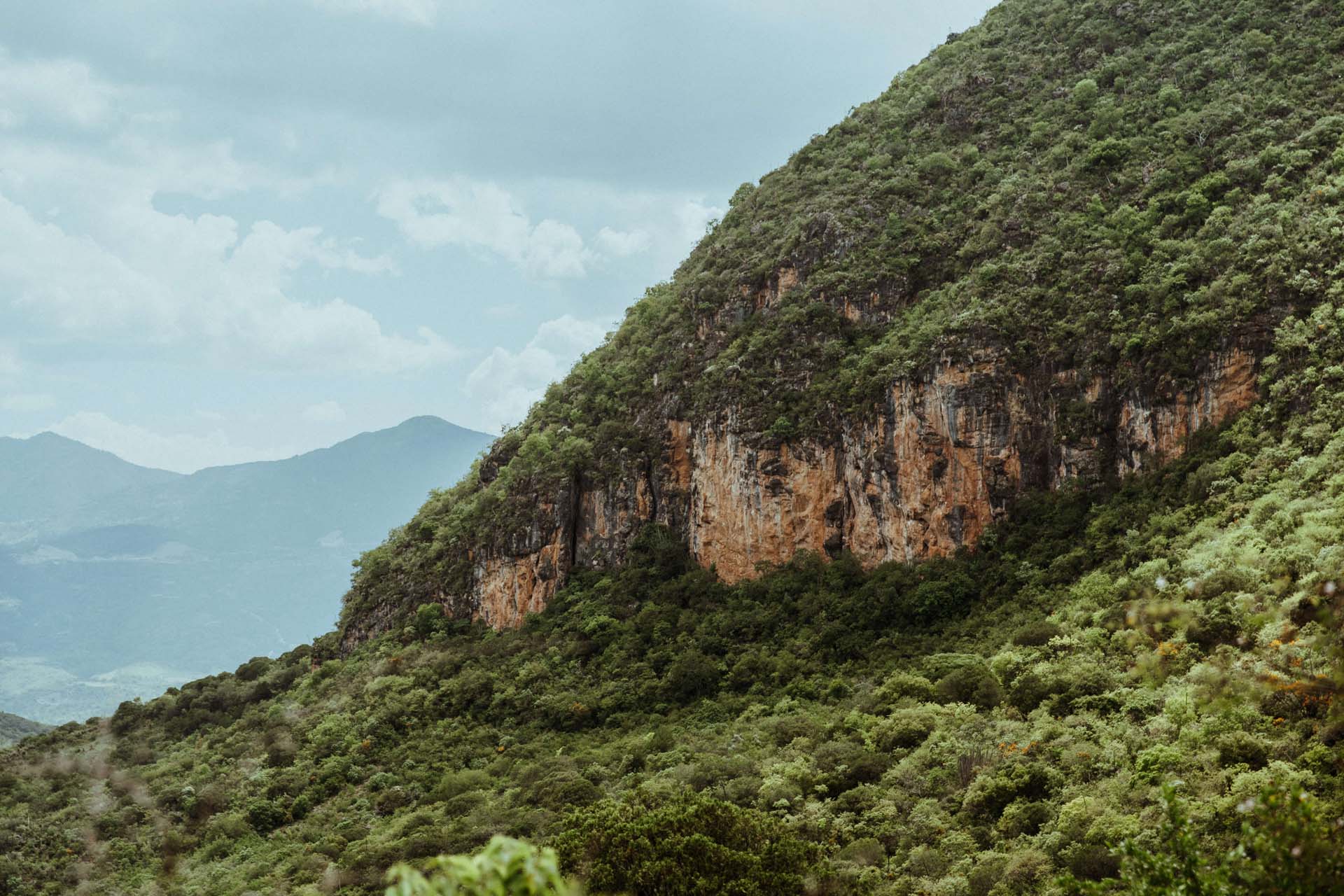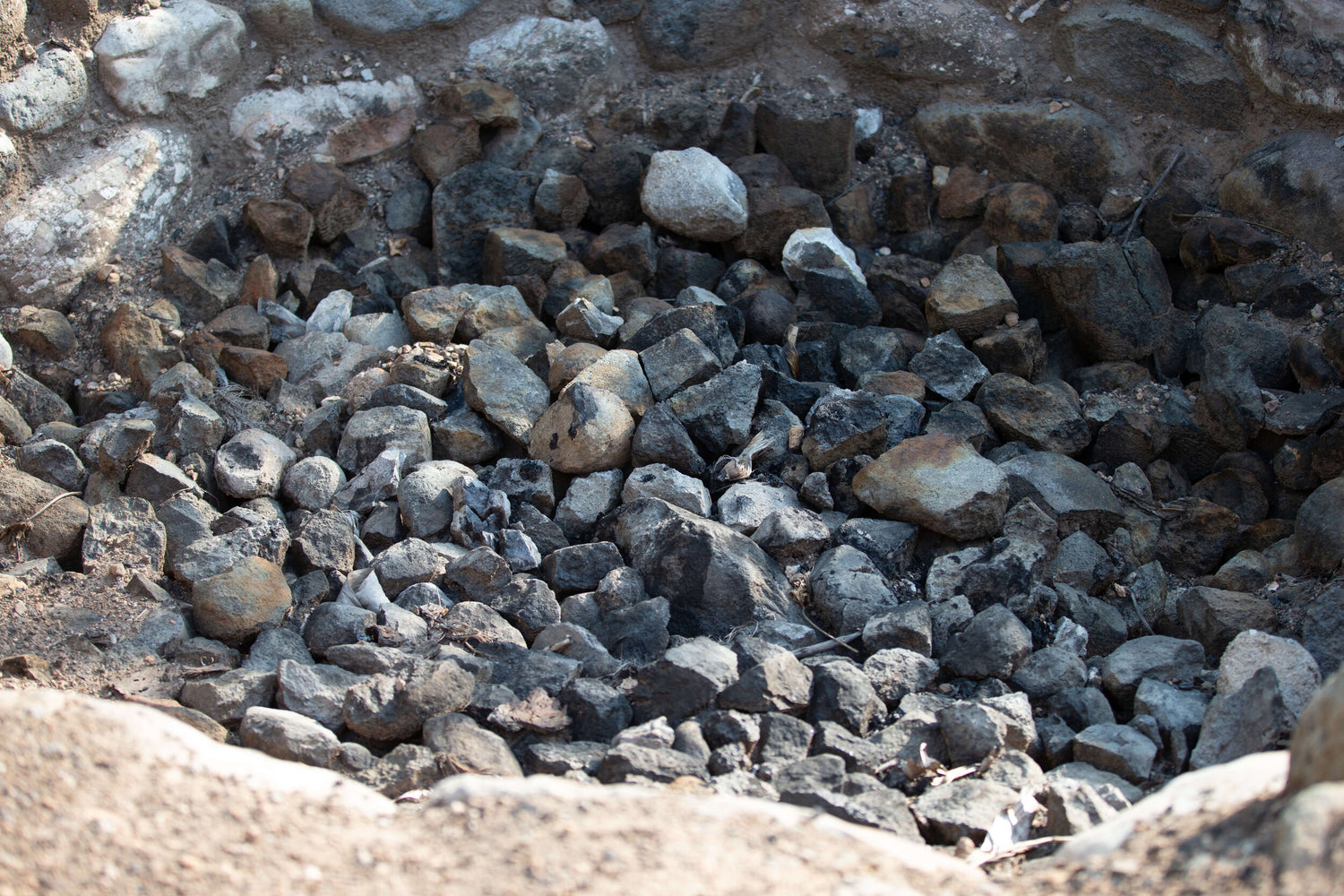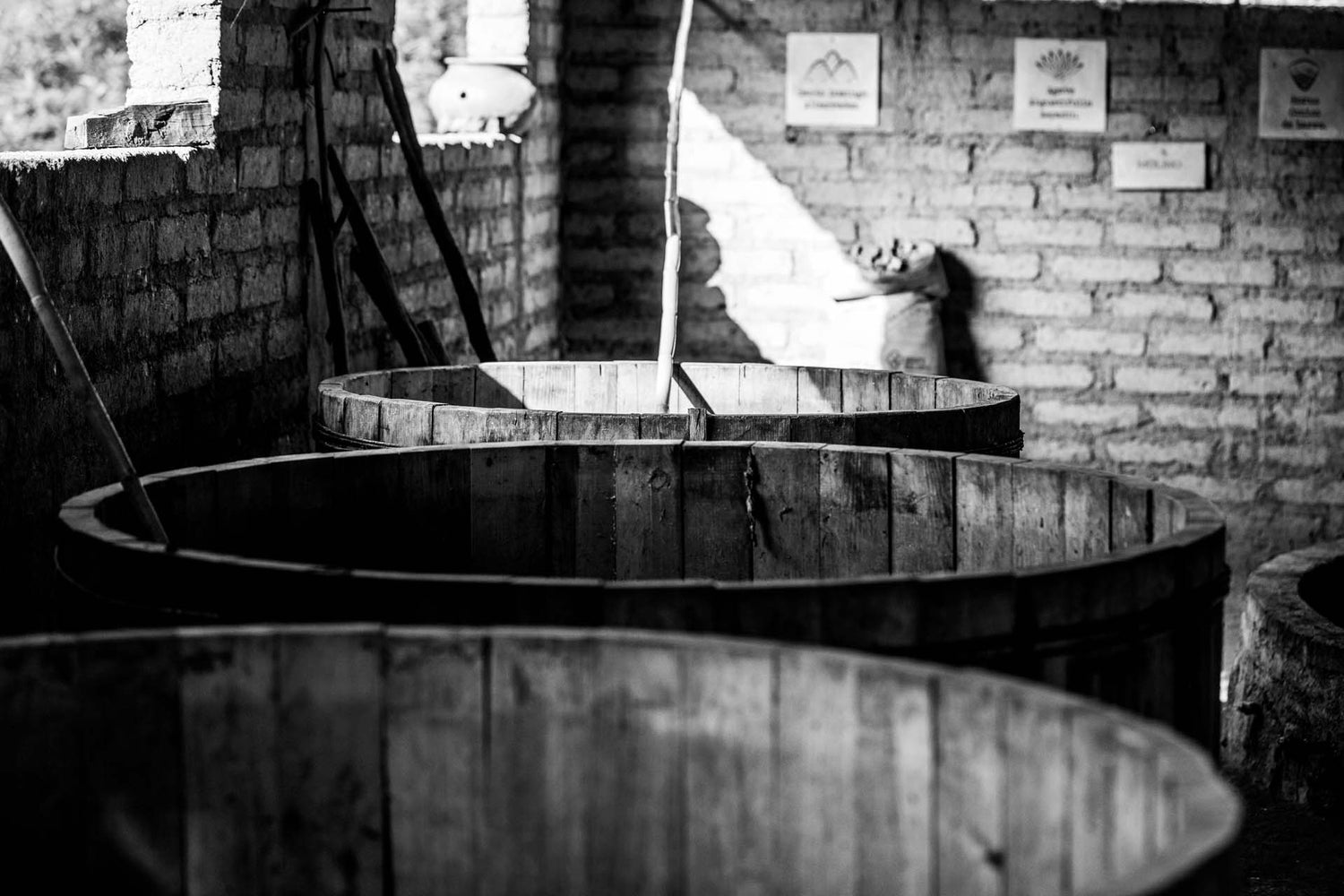
The Art of Mezcal – Traditional Small-Batch Production in Oaxaca
From Agave to Bottle: Our Mezcal Process
There are no words that fully capture the magical, labor-intensive craft of making mezcal. While general production guidelines exist, each master mezcalero brings their own techniques and secrets to every batch. These hidden variations create a unique character in every bottle, from agave to glass. Here, we share the artisanal methods of our mezcalero Abel Martinez, a clean, natural approach rooted in tradition.

Harvesting The Agave
It all begins with the agave seed, which grows into a strong, mature plant essential for crafting high-quality, artisanal mezcal. The key to exceptional mezcal is using only fully mature agave, which can take years to grow, depending on the species, some up to 15 years or more. When ready, the sharp leaves are carefully trimmed, and the heart of the agave, or piña, is dug from the earth. These heavy piñas are then transported to the distillery, where they are cut into halves or quarters in preparation for roasting. Every step honors the traditional small-batch process of Oaxaca mezcal, preserving the plant’s natural sugars and unique flavors for the next stages of production.

Cooking or “Roasting”
Once the agave is prepared, it’s ready for roasting. The piñas are carefully placed in a deep pit called a horno cónico, or earth oven, following traditional Oaxacan methods. The oven is filled with wood and topped with hot stones, which radiate heat to slowly cook the agave. The piñas are stacked by size, with the larger ones on the bottom and smaller ones on top, ensuring even roasting. Layers of moist fiber protect the agave from scorching, followed by banana or agave leaves, woven palm fiber (petate), and a final covering of dirt. The piñas roast in this pit for three to five days, sometimes longer, softening the fibers and converting starches into natural sugars to make the mash fermentation-ready. This slow, traditional roasting process gives artisanal mezcal its signature smoky flavor and rich complexity. The pit becomes so warm that even the distillery dogs enjoy lying on top for comfort! This method, practiced for generations, preserves the authentic character of small-batch mezcal from Oaxaca.

Mashing
After roasting, the earth oven is carefully dismantled, and the hot, caramelized piñas are removed to cool. The slow roasting transforms the natural sugars into a rich, sweet flavor that defines artisanal Oaxaca mezcal. Once cooled, the piñas are placed into a giant circular stone pit known as a trapiche for crushing. A heavy volcanic stone wheel, called a tahona, is pulled by a donkey or horse, slowly grinding the agave into strands of fiber and a juicy, sugar-rich mash. This traditional small-batch process not only prepares the piñas for fermentation but also preserves the smoky, complex flavors that make each bottle of mezcal unique.

Fermentation
The crushed piñas and their natural juices are placed into large, open-air wooden barrels called vats. These gigantic vats are filled with water to create mosto, a rich blend of agave nectar, fiber, and water. The magic of artisanal mezcal continues as wild yeasts and natural bacteria begin to work, fermenting the sugars over several days. This process produces a unique layer of flavors and aromas, transforming the sweet agave mash into alcohol. The resulting fermented mosto is now ready for the next step in traditional mezcal production, distillation, carrying the authentic essence of Oaxaca in every batch.

Distillation
With fermentation complete, the mash, fibers, and liquid are ready for distillation — the moment where artisanal mezcal truly comes to life! The liquid is placed into a traditional copper or clay still, surrounded by bricks and heated over wood fires. During distillation, the liquid evaporates into vapor and then condenses back into a pure liquid. In Oaxaca mezcal production, we typically distill twice: the first distillation produces a raw, impure spirit, and the second increases the alcohol content while refining flavors, creating the rich, complex mezcal we love. The best part? Tasting a fresh copita right under the spout as the mezcal flows is a moment of pure joy. Salud!
-
This is a simplified overview of the traditional mezcal production process. The ancient craft of making mezcal in Oaxaca is far more intricate than words can capture, with techniques and flavors varying from one mezcalero to another and from region to region. These insights reflect our firsthand experience producing small-batch, artisanal mezcal and working closely with master mezcaleros in Oaxaca.
